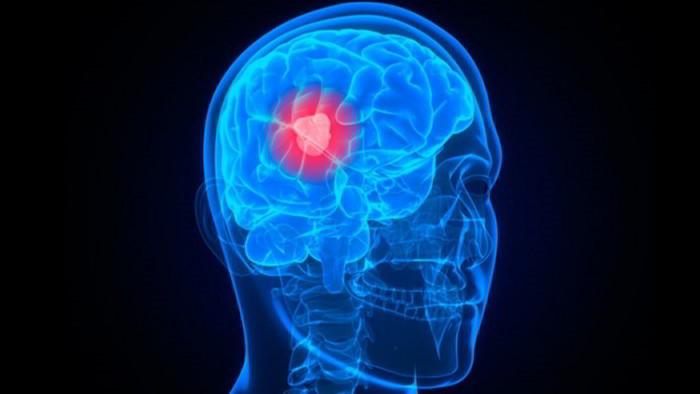Brain tumours .are strange growths which will grow in brain tissue or in the meninges, the membranes that cover the brain, the seriousness of a brain tumour depends upon its location, size and rate of growth.
Brain tumours may be cancerous or non- cancerous. Yet, unlike most tumours elsewhere in the body, cancerous and non- cancerous brain tumours may be equally serious because both kinds of tumour can compress nearby tissue, causing pressure to develop inside the skull. Brain tumours are more common in men, generally occurring between the ages of 60 and 70.
Tumours that originate from brain tissue or from the meninges that cover the brain are called primary tumours and are relatively uncommon.
Secondary brain tumours (metastases) are more common than primary tumours. They may be constantly cancerous, having grown from cancer cells that have spread to the brain from tumours in other parts of the body, including the breast.
Specific kinds of brain tumour, for example neuroblastomas, change only kids.
Brain tumors may be life threatening and may cause many health problems. About 16,800 brain tumors are diagnosed in the United States per year, and brain tumor is the cause of death in about 13,000 people per year.
Causes of Brain Tumour
Brain tumours can be malignant (cancerous) or benign. The benign ones, called eningiomas, are very slow growing and cause symptoms not through destruction of tissue but by placing pressure on the brain.
Malignant growths within the brain are actually relatively uncommon, despite the enormous numbers of cells that make up the brain and its supporting structures. There are a hundred thousand million nerve cells alone. In theory, any one of these could turn malignant but in fact such primary tumours are unusual. It is far more likely that a brain tumour has spread from a cancer elsewhere, for example the breast or the lung. (Cancers similarly often spread into the bones, lungs and liver, which also have exceptionally good blood supply.)
Brain tumours in children may follow from the abnormal development of the foetus’ nervous system.
What Are The Symptoms?
Symptoms are generally caused by a primary tumour or a metastasis compressing part of the brain or increasing the pressure inside the skull. They comprise:
- headache that’s generally more intense in the morning and is worsened by coughing or bending over
- nausea and vomiting
- blurry eyesight.
Other symptoms have a tendency to be related to whichever area of the brain is influenced by the tumour and may contain:
- slurred speech
- trouble reading and writing
- change of style
- numbness and weakness of the limbs on one side of the body.
A tumour may also cause seizures. Occasionally, a tumour blocks the flow of the cerebrospinal fluid that circulates in and around the brain and spinal cord. Because of this, the pressure inside the ventricles (the fluid-filled spaces in the brain) raises and leads to additional compaction of brain tissue. Left untreated, drowsiness can grow, which might eventually progress to coma and then death.
How Are Brain Tumors Diagnosed?
- If a brain tumour is suspected, you’ll have an instant evaluation by a neurologist.
- you’ll have computerized tomography (CT) scan or magnetic resonance imaging (MR1) of the brain to search for a tumour and assess its location and size.
- Tf these evaluations suertrest that the tumour has
- Propagate from a cancer elsewhere, you might need other tests for example mammography or chest X-rays to assess for tumours in the breast or lungs.
- Additional MRI scans may be done to reveal the tumour and surrounding tissue in more detail.
- You may also should have a brain biopsy, in which a sample of the tumour is removed and examined under a microscope in order to identify the kind of cell from which the tumour has grown.
What is The Treatment For Brain Tumor?
If a brain tumor is diagnosed, usually it’s the neurologist, or specialist in the brain and spinal cord, who treats the disorder. If operation is desired, a neurosurgeon performs the process. Occasionally, the tumour is treated with radiation therapy. Some patients are also followed with chemotherapy, determined by the kind of tumour.
Technology has improved to the point that some of the newer and higher performance MRI scanners can be used to follow patients with brain tumors after they’ve had surgery or radiation treatment. Using a technique called MRI Spectroscopy, the doctor is now able to differentiate between brain tissue that’s a remaining tumour versus brain tissue that’s scarred or irritated from a stroke or radiation. Ultimately, following up with a practitioner continues to be required.
Complementary Treatment of Brain Tumour
Complementary therapies will not be able to kill the tumour itself; however, many can help postoperatively. Chakra balancing will help with symptom control and energy balance, and also aid relaxation during orthodox treatment. Hypnotherapy can encourage a positive attitude. Aromatherapy, massage and reflexology are generally supportive. Any of the therapies listed under Stress will be able to help ease the tensions associated with this disease.
What is The Prognosis?
The future is generally brighter for slow-growing, non-cancerous tumours, and many will be fully healed. For other tumours, the prognosis is dependent upon the kind of cell changed and whether the tumour can be surgically removed. About 1 in 4 individuals is living two years after the first identification of a primary cancerous brain tumour, but few individuals live longer than five years. Most individuals with brain metastases don’t live longer than six months, although in rare instances, a man with one metastatic tumour may be healed. All kinds of brain tumour carry a danger of permanently damaging nearby brain tissue.


 (60 votes, average: 4.58 out of 5)
(60 votes, average: 4.58 out of 5)